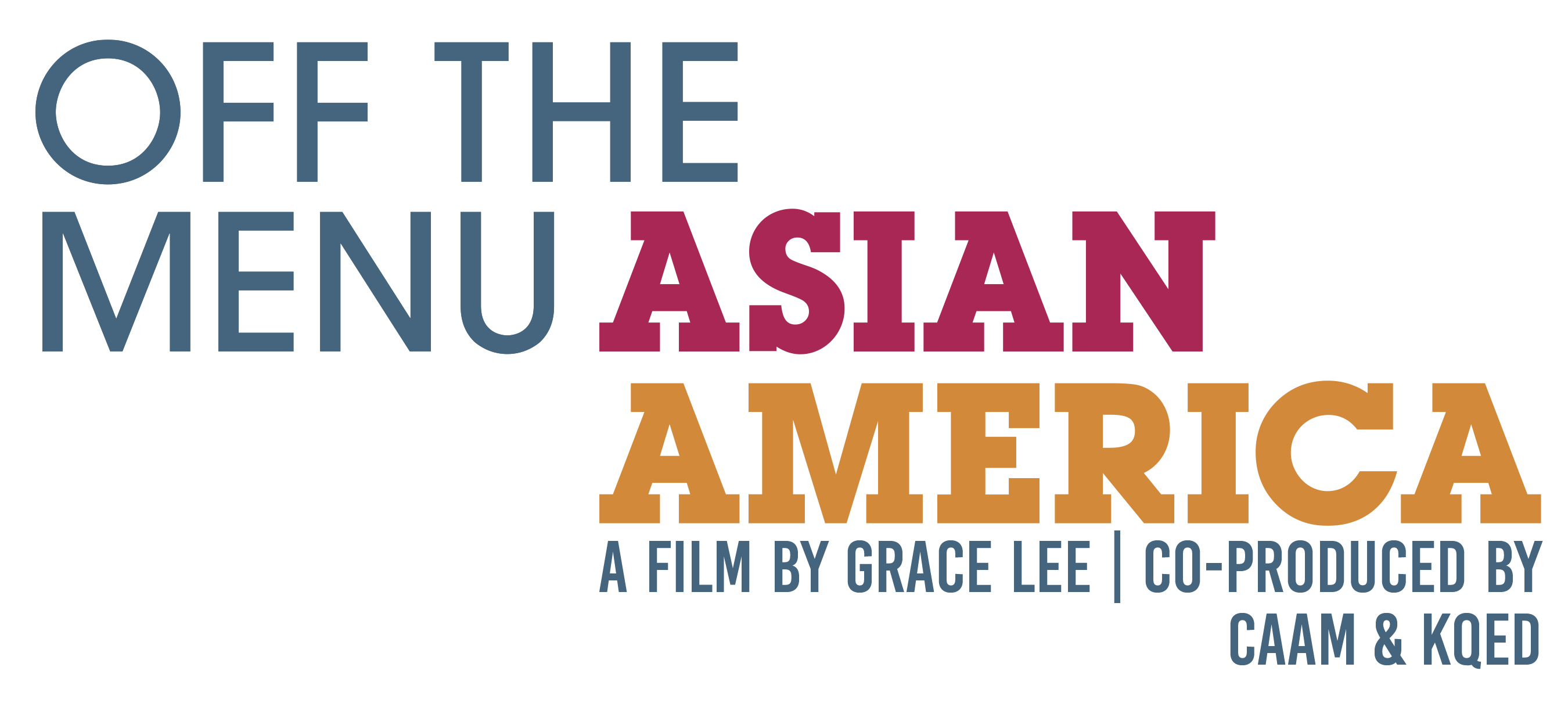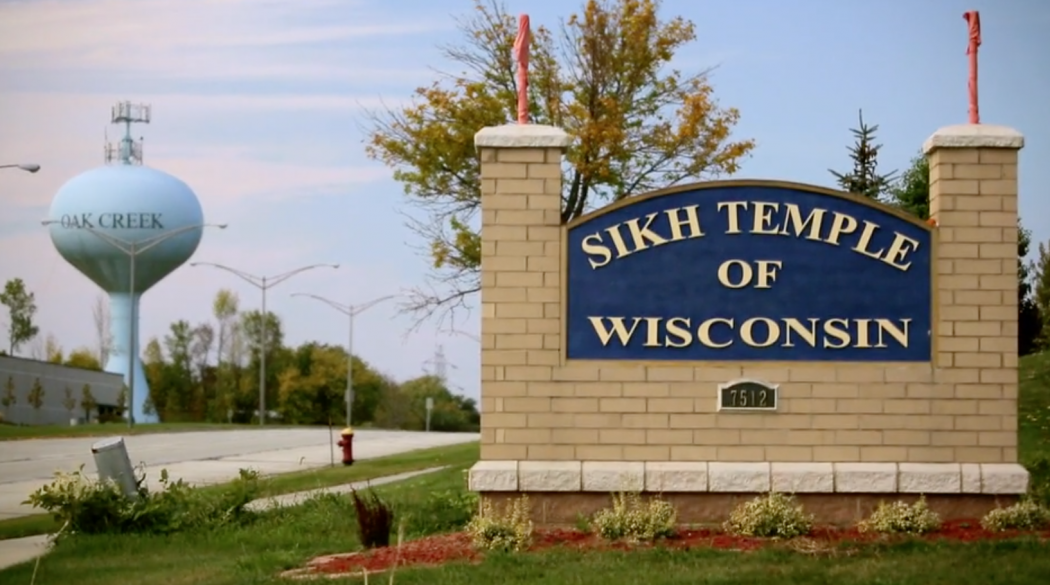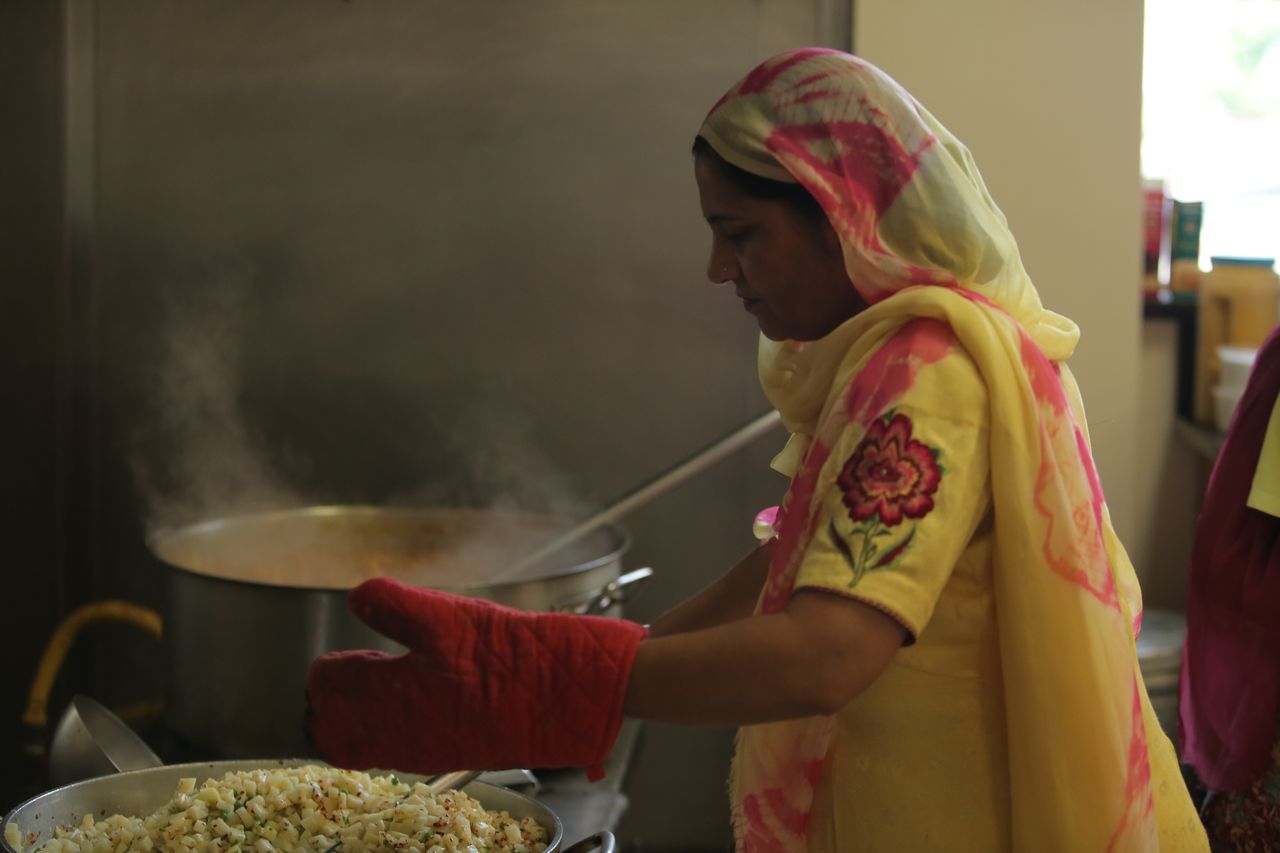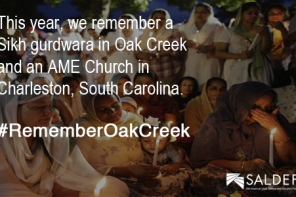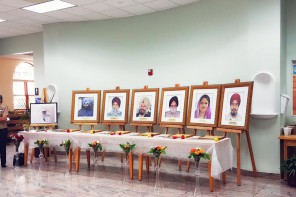In the wake of the shooting at the Sikh Temple of Wisconsin on August 5, 2012, community members came together in the face of tragedy. One of the members was a youth, Navdeep Gill, a nephew of one of six people killed in the shooting. Born and raised in Wisconsin, Gill is currently at university student. His parents emigrated to the U.S. in the early 90s and helped to start the Sikh Temple of Wisconsin.
One aspect of a Sikh temple, or gurdwara, is langar. Langar is the community meal, prepared and served for free. At the Oak Creek gurdwara, volunteers were there that morning preparing for the evening’s vegetarian langar meal when a shooter entered the temple and killed six, himself, and wounding others.
Langar became part of the temple’s healing process. Below, Gill shares more about langar and what happened after the tragedy.
Can you tell us what langar is?
Langar is a communal meal that is prepared and consumed together as a community. Most importantly langar is open to all regardless of race, religion, economic status, and any other discriminatory basis.
Langar is a meal that is open 24 hours, 7 days a week and 365 days a year. Langar is available at any and all Sikh temples across the world. Langar is a vegetarian meal so it does not void the beliefs of other religions such as Hindu’s who do not eat beef or Muslims who do not eat pork.
Uniquely, langar is a meal shared by community members, but everyone is required to sit on the ground. The meal is humbling and promotes equality among all regardless of your economic status or caste, and everyone is offered the same meal and the same options, there is no special
 How long have you been going to the gurdwara in Oak Creek?
How long have you been going to the gurdwara in Oak Creek?
I have been attending the Sikh Temple of Wisconsin since it was founded. I was born in 1994 and the gurdwara officially opened in 1997. But in the time before it opened we would hold prayer services at our homes or rent out halls. Since 1997, I have been attending gurdwara weekly. We moved to the new and current location in 2007. As I have grown older I have taken more and more responsibility within gurdwara. Since I remember I have always helped serve in langer. As kids we would pass out plates, cups, napkins, and utensils. Now as we are older we serve portions of the meal and help clean up the langer hall afterwards.
How did the tragedy that occurred affect you personally? And how did it affect your community?
August 5th, 2012. A date that may not hold significance to most, but it was a day changed my life and the life of many in my community. On Aug. 5th, 2012 a lone gunmen entered into the Sikh Temple of Wisconsin and shoot at countless people, hitting 10, injuring 3, and killing 7 including himself. His name was Wade Michael Page and he expressed his hate of ethnic, cultural and religious diversity in an intensely violent way.
I have been part of the Sikh Temple of Wisconsin my whole life, as it was founded by my uncle. So after the Aug 5th shooting the focus of my life and my community changed forever. We lost six lives that were near and dear to our hearts as they were the cornerstone of our community. I myself am the nephew of the temple President, Satwant Singh Kaleka, and I grew up knowing each and every individual that was lost that day.
One of the 6 victims lost on Aug 5th was my uncle, Satwant Singh Kaleka, who was the President of the Sikh temple from the beginning. And three of the other victims were priests at the temple who many people looked upto for spiritual guidance. The local Sikh community had lost their leaders and there were no distinct leaders to follow. It was through a collective effort that we healed and worked to bring our community and the greater community together. We as the youth group of the Gurdwara realized this, came together, and just began working. A few others and I became part of the core leadership group. We worked hand in hand, as our group consisted of victims’ families and many others that were there for the greater cause. We worked with officials and dignitaries, organized and prepared for events in remembrance of the victims such as the candlelight vigil and the ceremonial Sikh prayer that followed, to a whole year of events, recently the anniversary, that became the response and the aftermath of this horrific tragedy. We were able to bring communities closer and make them stronger as we increased our visibility within the community and strived to get rid of ignorance and instill acceptance as we took this tragedy into triumph.
Can you share the role that langar and food played in the healing process?
Langar was essential to the healing process. On the day of the tragedy as we all stood waiting for news of what happened and what to do next, the other Sikh temple in Brookfield, Wisconsin brought us langar. We shared a meal even in time of tragedy. It wasn’t just the food of the other sikh temple, but also the food that the Salvation Army distributed and food that neighbors bought and shared with us.
After the temple opened after one week, the cleaning began, but the community truly came together when we shared langar once again. It was through the constant sharing of langar that we were able to understand the tragedy, accept the tragedy and move forward with a positive outlook.
What was it like being a part of the film?
I appreciate being part of the film. I’m glad I was able to contribute to such a wonderful project.
 Learn more about langar and other stories in Off the Menu: Asian America, premiering nationally on PBS December 8, 2015. Check local listings.
Learn more about langar and other stories in Off the Menu: Asian America, premiering nationally on PBS December 8, 2015. Check local listings.
MORE
Recipes from the Sikh Temple of Wisconsin: Samosas, Roti, Poori, Chana Masala
